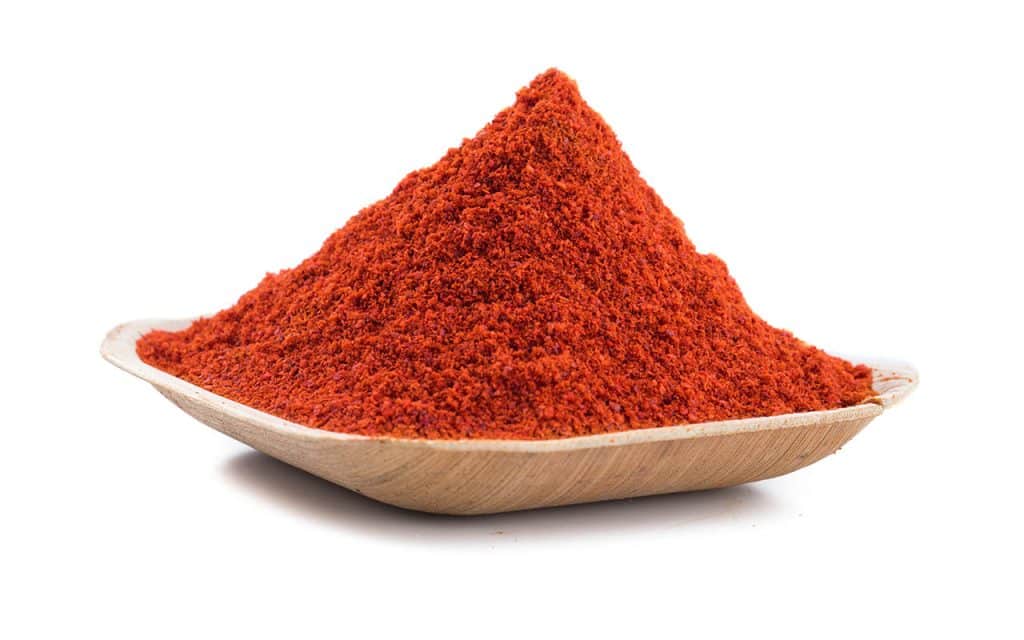
I love simple, traditional herbal home remedies – cider vinegar for stomach ache, carrageen drinks for soothing children’s coughs and ginger tea for nausea are some of my favourites. But over the last few years I’ve become very curious about the multitude of health benefits offered by cayenne pepper.
Cayenne (Capsicum frutescens) is best known for its spicy kick in curries and soups, and you’d expect to find it in the spices section of your local Healthfood Shop – but it’s also been a staple in traditional herbal medicine for centuries. It’s a traditional healer, a metabolic pick-me-up, and, as you will discover below, it has an almost unbelievable number of health benefits.
A friend of mine who is also a Medical Herbalist calls cayenne “a life saver”, even giving some cayenne tincture to her elderly mother who was having a stroke, to help keep her conscious as they waited for the ambulance.
She wrote an article about cayenne saying Cayenne…is a remarkable and cheap remedy for many ailments. It helps to regulate blood pressure, stems bleeding and stimulates the circulation in a gentle, but very effective way. It also (surprisingly) aids digestion and can help to heal stomach ulcers.
Warming and pain-relieving:
If you suffer from cold feet, this is something to try. Sprinkle cayenne powder in your socks (yes, really!) – it’s an old folk remedy for warming the toes. Just be gentle and don’t overdo it, or the reports are you’ll have very very warm feet!
Modern herbalists still turn to cayenne as a circulatory stimulant. It’s one of the stars in Dr Clare’s Joint Cream, where it’s used externally for stiff or aching joints. The warming properties help stimulate blood flow to the surface and may ease discomfort from sore muscles and arthritic twinges.
Capsaicin is also a pretty potent pain reliever. When you apply it topically to your skin, capsaicin can help with pain by reducing the amount of a chemical messenger known as substance P, which travels to your brain to signal discomfort. With less substance P, you feel less pain.
Psoriasis relief: Another counterintuitive application for Capsaicin involves offering relief for psoriasis. Psoriasis is an autoimmune condition that makes your skin itchy, scaly, and covered with red patches. While there is currently no cure, WebMd says topical capsaicin creams can help reduce itching and improve skin inflammation related to psoriasis.
Digestive support: Cayenne can be brilliant for digestion. It stimulates digestive juices and helps your body absorb nutrients more efficiently.
WedMd says: It might seem ironic because you probably associate spicy foods with heartburn. But the capsaicin in cayenne pepper actually stimulates the nerves in your stomach that produce digestive fluids, which helps your digestion. Research shows it may even help prevent the most common type of stomach ulcers, which are caused by the H. pylori bacteria.
I’ve also seen references to using Cayenne to help manage Fatty Liver disease, but you’d need to consult a medical herbalist for a protocol in those cases.
Colds and flus: One of my favourite winter flu remedies is hot lemon, honey, apple cider vinegar and a pinch of cayenne – this can be fantastic when you’re feeling under the weather and also makes an excellent soothing tonic for sore throats.
If you’re in Bantry sometime, pop in and try our Cold Buster in the Deli – a hot drink that we make using organic lemon juice, ginger, turmeric, rosemary, carrageen and cayenne – it’s a favourite for those days when you feel like you’re coming down with something, and it’s also delicious!
Weight loss and metabolism support: Capsaicin gently raises your body’s temperature, nudging your metabolism into action. It may also help curb appetite, making it a great addition to a healthy weight-loss routine. A little sprinkle in meals, a good-quality cayenne capsule, or a drink like the one above could be something to consider if you’d like to boost your metabolism.
First aid: Cayenne can even be used topically for minor cuts (to stop bleeding) and for shock or faintness. I’ve seen reports of people packing it onto wounds, though it’s a bit of a scary thought (I’ve not tried that myself yet!)
How to use it: Adding cayenne to your diet is easy and delicious. Here are a few ideas: Sprinkle over soups, stews, or roasted veg; Mix into hummus or salad dressings; Brew into a warming cayenne tea with lemon and ginger.
If you’d like to try some Cayenne at home, you can find Cayenne Powder in your local Healthfood Shop – always buy organic!
You can also make a cayenne tincture at home by soaking the powder in vodka for two weeks – great for circulation and as a warming tonic.
Or if you prefer not to taste the heat, cayenne supplements offer a way to benefit from capsaicin without the burn. And Cayenne also comes in topical forms for use in joint pain.



